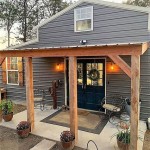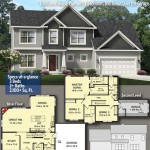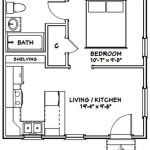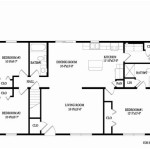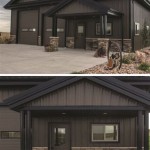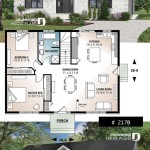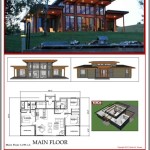Most Popular House Plans in Europe for 2024
The European housing market continually evolves, shaped by economic trends, environmental awareness, and shifting lifestyle preferences. Understanding the most popular house plans provides valuable insight into the priorities and aspirations of European homeowners in 2024. This article examines the prevailing trends in European house designs, exploring the factors driving their popularity and offering a detailed overview of prominent architectural styles.
Several influences dictate the direction of housing design in Europe. Sustainability remains a core consideration, with energy efficiency and eco-friendly materials becoming increasingly important. The desire for flexible living spaces, adaptable to changing needs, is also a significant factor. Furthermore, technological advancements are shaping the way houses are designed and built, allowing for greater customization and integration of smart home features. Finally, location plays a pivotal role. House plans differ significantly based on climate, terrain, and local traditions across the diverse regions of Europe.
Sustainability and Energy Efficiency
The emphasis on sustainability is perhaps the most defining trend in European house plans for 2024. European Union regulations and growing environmental consciousness are driving demand for homes with reduced carbon footprints. This manifests in several key areas:
Passive House Design: Passive House standards prioritize minimizing energy consumption by maximizing insulation, airtight construction, and heat recovery ventilation. These designs aim to create comfortable living environments with minimal reliance on traditional heating and cooling systems. While the initial investment might be higher, the long-term cost savings and environmental benefits make Passive House design increasingly attractive.
Renewable Energy Integration: Solar panels are becoming a standard feature in many new European homes. Governments often provide incentives and subsidies to encourage the adoption of solar energy. Other renewable energy sources, such as geothermal and wind power, are also being integrated into house designs, particularly in regions with suitable conditions.
Sustainable Materials: The use of eco-friendly and locally sourced materials is on the rise. Timber framing, recycled materials, and natural insulation options like sheep's wool and straw bales are gaining popularity. These materials not only reduce the environmental impact of construction but also contribute to healthier indoor air quality.
Water Conservation: Efficient water usage is another crucial aspect of sustainable house design. Rainwater harvesting systems, low-flow fixtures, and greywater recycling systems are being incorporated to reduce water consumption and minimize the environmental impact of water usage.
The integration of smart home technology also plays a vital role in achieving energy efficiency. Smart thermostats, lighting controls, and energy monitoring systems allow homeowners to optimize energy consumption and reduce waste.
Flexible and Adaptable Living Spaces
European homeowners increasingly seek homes that can adapt to their changing needs. The rise of remote work, multigenerational living, and the desire for increased flexibility are driving the demand for adaptable living spaces. Key characteristics of these designs include:
Open-Plan Layouts: Open-plan kitchens, living rooms, and dining areas are popular choices, creating a sense of spaciousness and allowing for flexible use of the space. This layout promotes social interaction and allows for easy adaptation to different activities.
Multifunctional Rooms: Rooms designed to serve multiple purposes are becoming increasingly common. A guest room can double as a home office, or a living room can be easily transformed into a entertainment space. This approach maximizes the use of available space and reduces the need for larger homes.
Adaptable Walls and Partitions: Moveable walls and partitions allow homeowners to reconfigure their living spaces to suit their changing needs. These flexible elements can create privacy when needed or open up the space for larger gatherings.
Outdoor Living Spaces: Balconies, terraces, and gardens are being designed as extensions of the indoor living space. These outdoor areas provide additional space for relaxation, entertainment, and connecting with nature. Covered patios and retractable awnings can extend the usability of outdoor spaces throughout the year.
Universal Design Principles: Designs incorporating universal design principles are gaining traction. Wider doorways, ramps, and accessible bathrooms ensure that homes are accessible to people of all ages and abilities. This is particularly important for multigenerational families and those planning to age in place.
Regional Architectural Styles and Trends
While sustainability and flexibility are overarching themes, specific architectural styles and trends vary significantly across different regions of Europe. These variations are influenced by climate, local materials, cultural traditions, and historical precedents.
Scandinavian Minimalism: Scandinavian countries continue to embrace minimalist designs characterized by clean lines, natural light, and functional layouts. Wood is a dominant material, both in construction and interior design. The focus is on creating bright, airy spaces that promote well-being and connection with nature. The use of large windows is prevalent to maximize natural light intake, particularly during the long winter months. Underfloor heating is common to provide efficient and comfortable heating.
Mediterranean Revival: In Southern Europe, Mediterranean-inspired designs remain popular. These styles typically feature stucco exteriors, terracotta roofs, and courtyards. The focus is on creating outdoor living spaces that can be enjoyed throughout the year. Natural materials like stone and wood are commonly used. Energy efficiency is integrated through passive cooling strategies like thick walls and strategically placed windows.
Central European Modernism: Central European countries often blend modern architectural principles with traditional elements. Designs may incorporate exposed brick, concrete, and steel, while also featuring elements like pitched roofs and traditional facades. The emphasis is on creating functional and aesthetically pleasing spaces that integrate seamlessly with the surrounding environment. The use of high-performance windows and insulation is crucial to meet energy efficiency standards.
British Contemporary: In the United Kingdom, contemporary house designs often combine traditional materials with modern architectural techniques. Brick and stone are common exterior materials, while the interiors are designed to be light and airy. The focus is on creating comfortable and functional living spaces that meet the needs of modern families. Sustainable features, such as solar panels and rainwater harvesting systems, are increasingly integrated into these designs.
Alpine Chalets: In mountainous regions, alpine chalets remain a popular choice. These designs are characterized by their steeply pitched roofs, wooden exteriors, and cozy interiors. Modern alpine chalets often incorporate large windows to take advantage of the views and integrate sustainable features to minimize their environmental impact. The use of local materials and traditional construction techniques is important to maintain the authenticity of the design.
The influence of prefabricated and modular construction is also growing across Europe. These methods offer faster construction times, reduced waste, and greater cost control. Prefabricated modules can be customized to meet specific design requirements and can be easily assembled on site. This approach is particularly appealing for homeowners looking for affordable and sustainable housing options.
In summary, the most popular house plans in Europe for 2024 reflect a growing emphasis on sustainability, flexibility, and regional architectural traditions. Homeowners are prioritizing energy efficiency, adaptable living spaces, and designs that integrate seamlessly with the surrounding environment. The adoption of new technologies and construction methods is further shaping the future of housing in Europe, offering greater customization, affordability, and sustainability.

House Plan 041 00172 European 2 024 Square Feet 3 Bedrooms Bathrooms Plans Craftsman Open

House Plans Floor Blueprints

House Plans Floor Blueprints

House Plans Floor Blueprints
Top 8 House Design Trends For 2024 The Plan Collection

House Plans Floor Easy Search Form

House Design Styles Find Plans Designs By Style Houseplans Com

House Plans Floor Blueprints

House Plans Home Floor Designs Houseplans Com

House Plans Floor Easy Search Form
Related Posts

